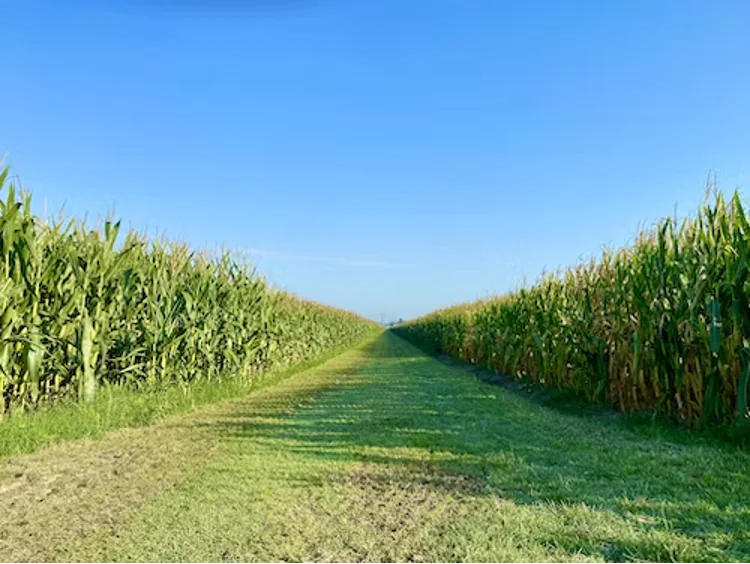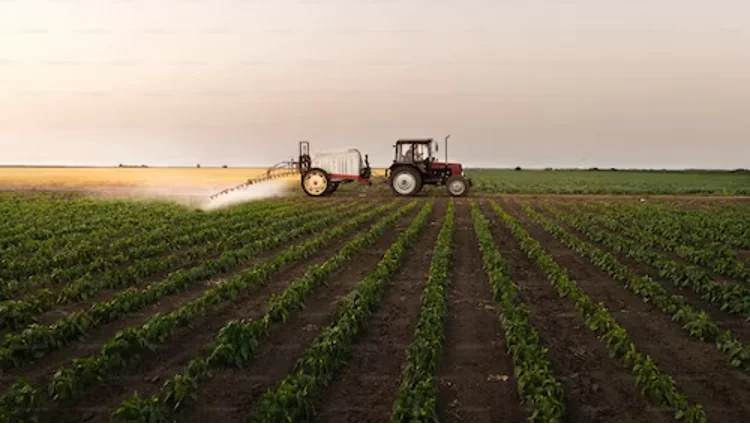Sweet corn, often known as ear corn, is a warm-season annual crop that bears ears with kernels that may be yellow, white or bicoloured, so its important to keep an eye on agricultural weather data. Sweet corn is a staple crop in many Native American diets and has been produced in the Americas for thousands of years. The combination of corn, beans, and squash, known as the Three Sisters, is cultivated by Native Americans.
Learn all you need to know about corn here, including cultivating, planting, caring for, and dealing with pests and illnesses. Once you’ve reviewed this guide, you will only need to look further for a corn-growing job.
Corn flourishes in hot, sunny climates with plenty of water (natural or irrigation), deep, rich soil, and good soil structure. Keep reading our post to get all the details you need to know.
What Kind of Weather and Soil Does Corn Need to Grow?
Day and season temperatures affect crop growth. Corn grows best from 77 to 91°F (25 to 33°C) during the day and 62 to 74°F (17 to 23°C) at night.
Like other plants, corn needs acidic to neutral soils ranging from pH of 5.5 to 6.5. Because plants are thirsty, it’s also crucial that the soil be wet and drained well. Corn requires rich soil since it feeds heavily, especially on nitrogen. It grows on soils enriched with beans, alfalfa, vetch or clover. Sow the seeds in the ground when the soil temperature is 60–65°F (16–18°C).
Taking care of Crop Plant
There is no simple method for caring for corn since it requires constant monitoring and management. However, a few critical locations need additional care when producing crops. First and foremost, corn needs enough moisture and nutrients. Pollinate as many plants as possible. Finally, safeguard your crops from weeds, pests, and illnesses.
Irrigation

Watering from planting to harvesting is crucial. If crops of maize don’t get enough water during reproductive growth, yields might plummet.
Overwatering may damage seeds and roots. Knowing how plant water demands fluctuate during the growing season can help you make smarter watering decisions.
Weed Control

Weeds must be kept away from growing corn during the first month. Kill any unwanted weeds that have taken root near the stalks. Afterwards, the plant’s shallow roots may spread up to a foot (30 centimeters) out from the stalk, so farmers must be careful not to harm them while pulling weeds by hand. To prevent weeds, they should mulch the area.
Fertilizing

Successful cultivation of plants requires a complete supply of nutrients. Magnesium, iron, and sulphur are only needed in minimal quantities, whereas nitrogen and potassium are essential throughout the growing season. The soil must have adequate nutrients to develop a healthy corn plant at every stage. Thus, timely and sufficient fertilizer treatment is essential.
Pollinating

The wind will pollinate the plants if you cultivate corn in blocks of at least three rows. Pollen is distributed when the wind blows, and the stalks rub against one another. When corn tassels initially emerge, pollen is transported from them to the silks of the growing ears.
Poorly pollinated plants have ears without kernels. Manual pollination is useful in this kind of scenario. Hand-pollinating reduces barren stalks and improves kernel development in big fields, increasing the production of crops.
To avoid flavour-altering cross-pollination, cultivate just one corn type. If not, keep your crops 300 feet (92 m) apart.
Pest and Disease control

Typically, corn diseases are caused by the weather. For instance, if the weather is excessively cold and wet, the Northern Corn Leaf Blight (NCLB) may spread rapidly through the developing corn. Hot, dry weather during cultivation might promote the spread of root rot and common smut. Preventative measures, such as proper watering, producing resistant hybrids, and composting plant debris, may reduce the economic losses caused by various agricultural diseases. Using fungicides and other disease-preventative measures is also highly recommended.
Corn farmers must also contend with several pests that are unique to the crop, in addition to the more common illnesses. The two most frequent are the corn earworm (Heliothis virescens) and the corn leafworm (Spodoptera frugiperda). The most effective pest management method is systematically applying the appropriate quantity of pesticide to crops in progress. Long-term techniques like crop rotation and cover crops also prove effective in the battle against pests and diseases.
Conclusion
There are a few essential steps in providing proper care for corn. Corn grows in full sun and soil that drains well. It is important to keep the soil wet during the early stages of the development of plants. Fertilize properly to provide the required nutrients. Pests and illnesses need to be identified and managed. Finally, harvest the corn at its peak for the best possible taste and texture.






Comments closed.